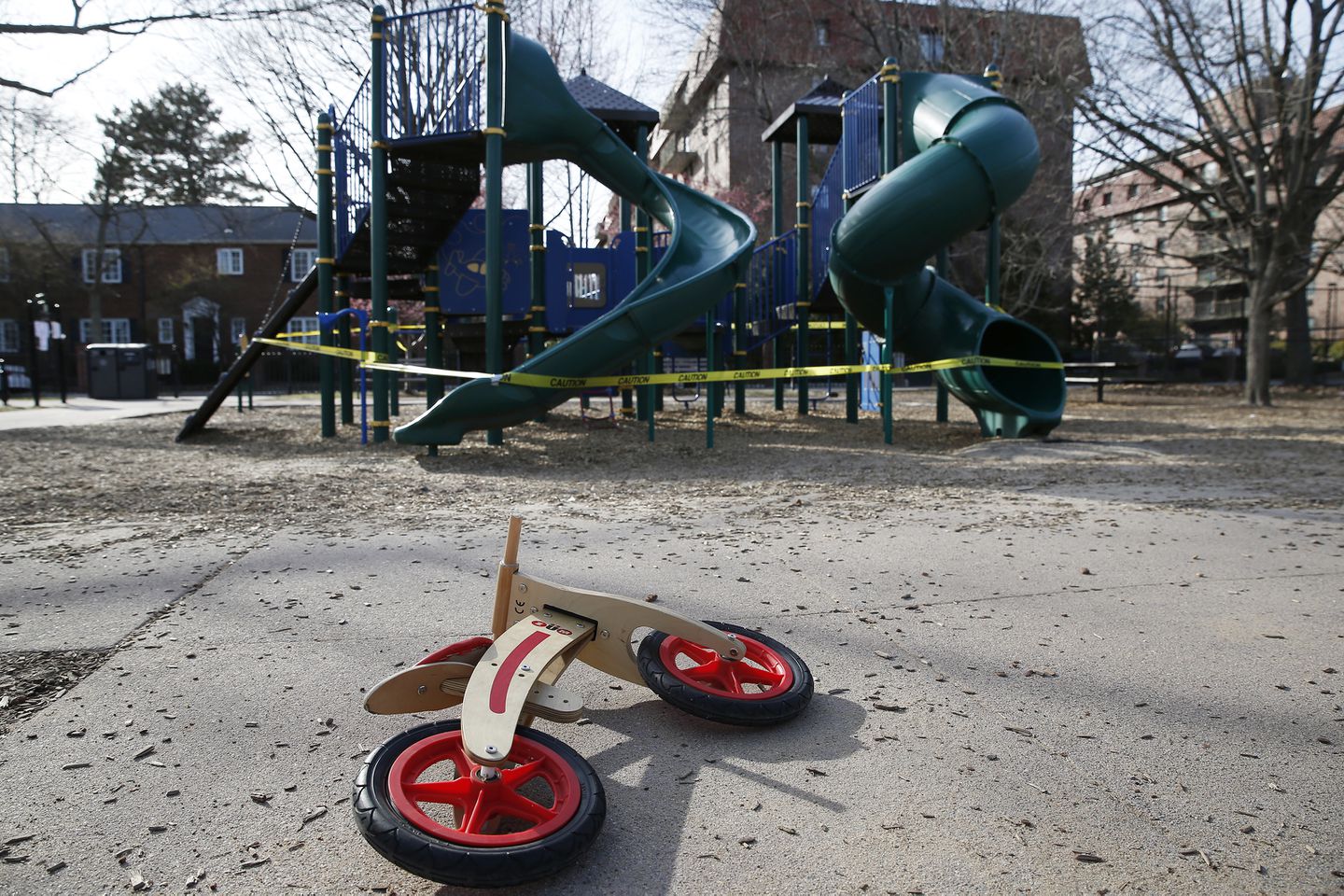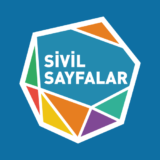“We Are Deprived Of Tools That We Can Learn What Happens To Children”

Human Rights Education Program Coordinator Mehmet Onur Yılmaz with whom we talked about the violation of children’s rights at home during the epidemic, says that they have been deprived of tools that they can learn what happens to children.
Can you briefly introduce yourself?
In 2001, I received my undergraduate degree from the Department of Architecture of the Middle East Technical University. In 2004, I got my master’s degree in Ecole Nationale Supérieure d’Architecture et de Paysage de Bordeaux on “The Effects of Natural Disasters on Historically Built Environment”. I received my second master’s degree in Human Rights from Hacettepe University in 2010. I continue my doctorate study on human rights at the same university. I worked as a Coordinator at Maltepe University Human Rights Center between years 2012-2015.
I’m still working as the Coordinator of Amnesty International Turkey Branch of the Human Rights Education Program. In addition, I am the founding member of Gündem Children’s Association, which was closed with the decree law in 2016 and I am the editor of Newspaper Solfasol, a local newspaper in Ankara. My work focuses on children’s human rights, ethical education of human rights, state theory based on human rights and ethics.
With the restrictions created by the COVID-19 pandemic, houses became closed institutions for children. What risks does this have especially for children?
In addition to the direct problems the epidemic has created, it has confronted us all with the many problems and with the severe consequences that persist within the societies. There were always domestic risks that children were facing, and many children were already suffering from it. With the epidemic, the domestic risks faced by children have increased, and on the other hand, preventive and protective institutions and mechanisms that were designed for children that had already been inadequate before the epidemic remained ineffective.
For example, despite all the shortcomings and problems, schools were the places where it was possible to detect the neglects, abuses or interventions children faced at home. At the moment, children are away from the eyes of their teachers and experts who take care of them against neglect and abuse. On the other hand, a significant number of children were able to access relatively regular nutritional support such as milk and lunch at school. This has been interrupted for the past month.
How would children be protected from the violence and exploitation they face at home?
Even if there had been no direct neglect or abuse, the child’s deprivations, health problems and the reflection of the experiences of other family members on the child could also be detected at school and there was a chance for necessary intervention. From this point of view, the fact that the school as a public space and the teacher as a public figure getting out of the child’s life mean not only the disruption of education but also the loss of public support that protects him/her in the child’s life.
The children are at home and out of sight, and we’re deprived of the tools that we can find out what happens to them.
The report published by the Istanbul Bar’s Children’s Rights Center is as a proof of this. While any kind of domestic violence is expected to increase during the isolation period, a significant decrease in sexual abuse complaints against the child is of course not an indication that the abuse has decreased. This shows that we are aware of much less while more is happening to children.
What does violence against children and child neglect mean? What should be done about these?
Children are born to a world built by adults and that world’s rules and institutions are determined by adults. If adults don’t do their part and do not support children in this process, children will be left alone at all stages, starting from understanding the adult world to coping with it as a whole. Children are open to all kinds of neglect and abuse, just like any individual who is left alone. From this point of view, negligence is the inability of adults to realize their responsibilities as required by human rights.
Although developmental characteristics vary from child to child or with age, children are somewhat dependent on adults. There are things adults need to do for children’s needs such as sheltering, nutrition, health, safety and education. Notice that each of these requirements corresponds to a basic human right. This responsibility starts with the caregivers, and then belongs to all adults. It is generally a social responsibility, or in other words a public responsibility. Here, the public responsibility must be perceived as belonging to each of us individually and to all of us as a whole. Whether this bond with a developmental basis turning into dependency with economic, social and cultural reasons or not depends on the attitude of the adults. Adults, who have reached the knowledge of how to meet these needs and who have the social-economic power and tools to provide, unfortunately often use this knowledge of life as a tool of power against their children. This means the emergence of an adult-dependent childhood. The use of the adult’s developmental, physical, economic or social power to violate the human rights of the child, to force or deceive the child to do something can also be called as abuse. Negligence can be defined as the failure of the adults to fulfill their responsibilities towards the child in the relationship of responsibility between the child and the adult, and abuse can be defined as using the power and advantages of adulthood against the child by the violation of human rights.
If you pay attention, I haven’t mentioned social ties like motherhood, fatherhood or personal ties like love. The reason for this is that it is not the love or sympathy for the child that determines the quality of the relationship between the child and the adult, nor the alleged rights derived from the biological ties such as motherhood and paternity. It is the human rights of children that determine the basis in this relationship, in other words, the adult’s obligation to fulfill human rights against the child.
Who are the perpetrators of violence and in which case the risks increase?
Many studies show that violence against children usually comes from their closest ones. In other words, from the caregivers of the child or from his/her first or second degree relatives, if any. While this is the case for crude physical violence, the circle tightens when it comes to sexual violence.
The isolation that occurred during the epidemic forces us to have limited spatial possibilities and not to leave our homes. It is clear that the houses of many of us are not suitable places to spend time in, or to stay in for days and to live in it together. Until now, most of us have not been using our houses like that. However, with the epidemic, we are stuck in closed spaces with limited possibilities. Even this situation of being stuck brings out violence by itself, economic troubles, uncertainties about the future, fear of sickness death have a potential of turning the house into an unbearable place for everyone. Children are the ones who experience the consequences of this state which we got caught unprepared. In this case, it is more difficult than ever to prevent violence.
What kind of a path can be followed regarding access to right-seeking mechanisms and other support services for children, especially in this period,?
As Melek Görgenli had warned in the early days of the epidemic, physical distance is necessary, but we have to get closer to each other socially. That means solidarity, to act for each other, to protect each other’s rights. Right-seeking mechanisms for children have always been very weak, even those that existed in the former system are not working now. We are at a time when we need to close the gap by sharpening our social senses about our environment and opening our eyes to what is happening. The most effective right seeking tool for children in this period will be to apply to an adult they trust. For us adults, it is not only legal but also a humanitarian responsibility to mobilize public mechanisms for children we suspect of being neglected or subjected to abuse and to be insistent upon those mechanisms during these difficult days.
What do you think are the most urgent and prior things to do? What Works have been carried out on protective measures for children during the epidemic process?
Unfortunately, no public protective mechanism or precaution other than pre-pandemic ones was defined. On the contrary, public services for children have been slowing down, getting disrupted and even being disconnected like all other public services during the epidemic, so we are in a very overwhelming situation. If we consider the stagnancy of civil society and human rights advocacy working on the field of children in recent years, what has been done for children during the epidemic process cannot go beyond making statements and publishing a few guides as I do now.
On the other hand, the Ministry of Education and the Ministry of Family, the two most important institutions that produce services for children, were also caught unprepared as seen by all. It is unbelievable that the online education given over EBA TV which is offered by the Ministry of National Education as a solution, has been prepared without thinking of the conditions of the children and without any additional precautions as if everything was OK and without any ethical concerns. It is clear that this education will increase the inequality among children, as it was designed with the assumptions that there are suitable internet infrastructures in every home, that every child has their own computers, tablets or televisions, and that there are people to accompany the children. The situation is even worse for the Family Ministry. The services for the children that have already been flawed were evaluated within the epidemic and the social support relationships of the society was reduced to limited cash support by violating all the principles of social services. This approach which ignores children increases the risks for children even more in this process
There are children who are in prison and convicted, babies and children who have to be in prison with their mothers, and there are children in nursing homes. How can we reduce the risk of the epidemic for them or protect them?
The only solution for children in prison would be discharging all. It is possible to find permanent solutions for the shutdown of child prisons and for children who stay with their mothers in prison in accordance with children’s rights. But the latest criminal execution regulations show that the state prefers temporary solutions again.
With the epidemic, the risks for children in prisons reached a level that directly threaten children’s right to life much more than before. Due to the nature of the outbreak, it is not possible to prevent it in prisons. Considering that health services in prisons are already very limited and additionally disrupted during the epidemic period, the insistence on keeping children in prisons is to run the risk of deaths of children.
On the other hand, the fact that the visits being restricted for more than a month in prisons, which are closed institutions with no independent monitoring, has now turned them into even more secluded places. Our possibilities to be aware of what happens in prisons and to intervene in the things happening to children have also been limited. When all these are evaluated, the shutdown of child prisons and the discharge of all children in prisons are necessary considering children’s human rights.

Bizi Takip Edin